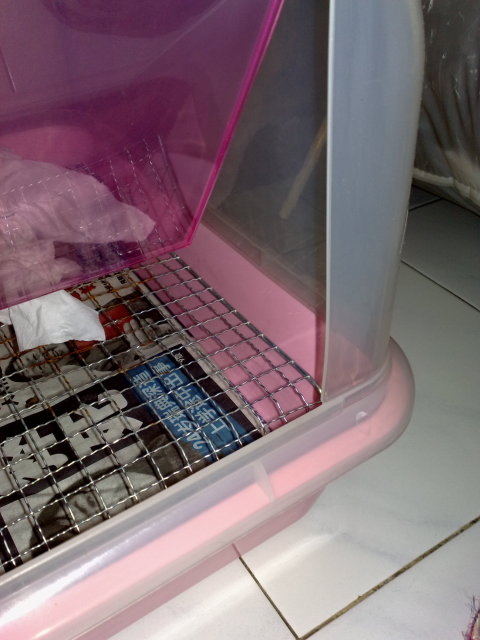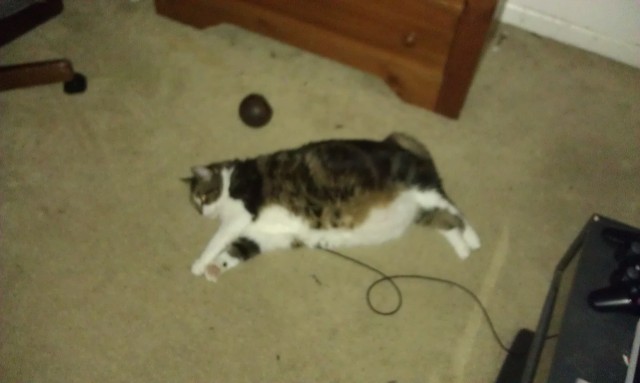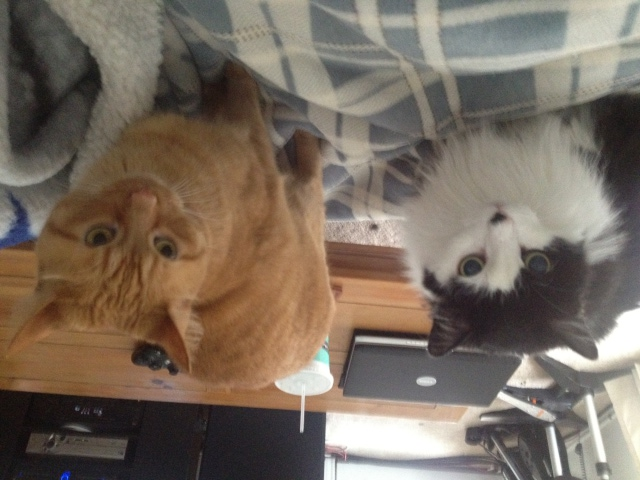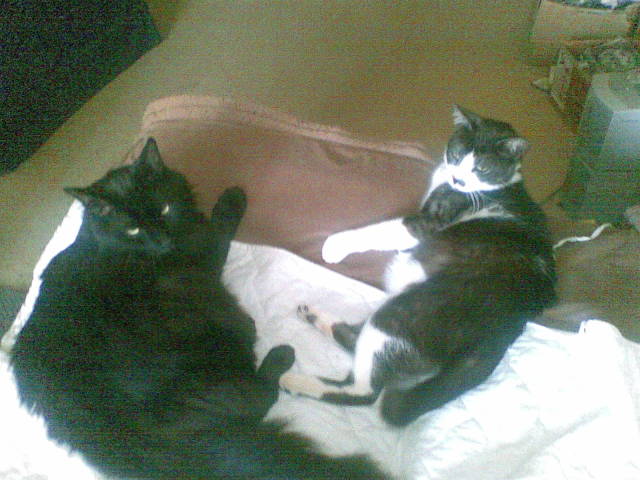QuestionI have a cat Julie that is around 9 nonths old and she is a smaller cat. She might be pregnant by my othre cat Babie. What are sings of being pregnant and what should I do for her while she is pregnant.....?
Sam
Answer Well, the first indicator of pregnancy would be the disappearance of Julie's estrus (heat) cycle. It could cease abruptly or simply fail to show up the next time around. However, this sign is not always as clear as the others. The first distinct sign is when her nipples enlarge a bit and turn pink. This should happen from two to three weeks of pregnancy.
Then, between three and four weeks, she may get morning sickness and vomit from time to time. At four weeks, you can take Julie in for "palpation", during which the vet feels her abdomen to rightfully determine whether or not she is pregnant. If the result is positive, you will want to put her on a special diet around that time. Give her more quantity, and change to either kitten or pregnant cat food. She will need to remain on it until the kittens are through nursing.
At five weeks, Julie's abdomen will start to enlarge, and at six weeks, the kittens will be viewable on an x-ray or sonogram. I would recommend taking advantage of this, to determine how many kittens will arrive. Other than simply satisfying your curiosity, this is helpful to know in case something goes wrong and your cat doesn't produce all of them. The average litter is three to five kittens, but they have been known to range from one to ten!
At roughly seven weeks, Julie may begin to lose her appetite and refuse to eat. At this point, the kittens' movement can easily be felt. At seven to eight weeks, she will spend a lot more time grooming herself and might look for a place to have her kittens. This would be the optimum time to prepare a queening bed for her. This should be in a warm, quiet, dimly-lit area that's easily accessible to your cat, such as a closet or an empty guest room. Here, you should place a box, big enough for her to stretch out in, lined with an old towel. You might want to place a heating pad or hot water bottle underneath the towel to ensure the kittens' warmth. Get Julie acquainted with the box and encourage her to have her kittens there, as she'll be staying in it during their first four weeks of life, at least. Also, make sure to provide plenty of food and water close by.
Starting at about eight weeks, I would suggest taking the temperature of the mother-to-be every day. When it drops about one degree Celsius (or 34 degrees Fahrenheit), you'll know that the birth is about 24 hours away. As the time draws closer, she may also discharge clear or bloody fluid from her vulva area. (This, actually, was a clearer sign than temperature, in my cat Sadie's case.) Directly after that, she will start to have contractions, which, if not made audible, are distinctly visible in the abdomen region.
Now you should start preparing for when the kittens arrive. Make sure the surrounding temperature is about 69 degrees Fahrenheit; a kitten can stand neither cold nor humidity.
In the case of an emergency, you also need to have a large bowl of water around 100 degrees Fahrenheit and some rough towel pieces. If a kitten's amniotic sack is still intact when born, and your cat doesn't rescue it right then, you need to take a rough towel piece and wipe away the fluid, especially from the nose region. If it doesn't suddenly breathe, rub the kitten from tail to head to encourage it. If your cat is giving birth for her first time, she may get confused and neglect a kitten or two. If she doesn't start licking her newborn and just leaves it there to freeze, that's when you need to submerge all but the head in the bowl of water. If it's not absolutely necessary, however, I wouldn't suggest you do this since the amniotic fluids dry a lot faster than water.
After the birth, you should take notice of the kittens' actions. Healthy newborns are either sleeping or suckling. A few hours after all are born, place a fresh towel or blanket in the nest, as the other one will be stained and unsanitary.
Also remember that from the point of labor until the kittens reach an independent age, you will need to keep your tom cat out of the kittening room. The main reason being that male cats in the wild can tell no difference between a kitten clothed in afterbirth and a bloody mouse. Also, my father cat (and I'm sure many others) has a history of getting too rough with his kittens during playing. When a kitten is too young to defend itself, the results can be fatal. When you finally do decide to integrate, keep a close eye on them.
Well, that should about do it. Forgive me if I gave any unwanted surplus; I tend to get carried away at times. I wish you and your cats the best of success, and don't hesitate to come back to me if you need any further information, such as raising newborns.
Hope I Was of Help,
Rachael

 my pregnant cat has given birth to one dead kitten
Question
l
my cat has been nesting for last 2 days, whe
my pregnant cat has given birth to one dead kitten
Question
l
my cat has been nesting for last 2 days, whe
 My cat doesnt piss on his litter box
QuestionLitter box
QUESTION: My 7months stray ca
My cat doesnt piss on his litter box
QuestionLitter box
QUESTION: My 7months stray ca
 what type of cat is mine?
Question
zella
Ok this cat is very big one of bi
what type of cat is mine?
Question
zella
Ok this cat is very big one of bi
 Cat peeing on floor after other cat died
Question
My babies
I have a 6 year old tabby (my
Cat peeing on floor after other cat died
Question
My babies
I have a 6 year old tabby (my
 3x week visiting cat
Question
banjo and Joppy
Hi thanks for maybe bei
3x week visiting cat
Question
banjo and Joppy
Hi thanks for maybe bei